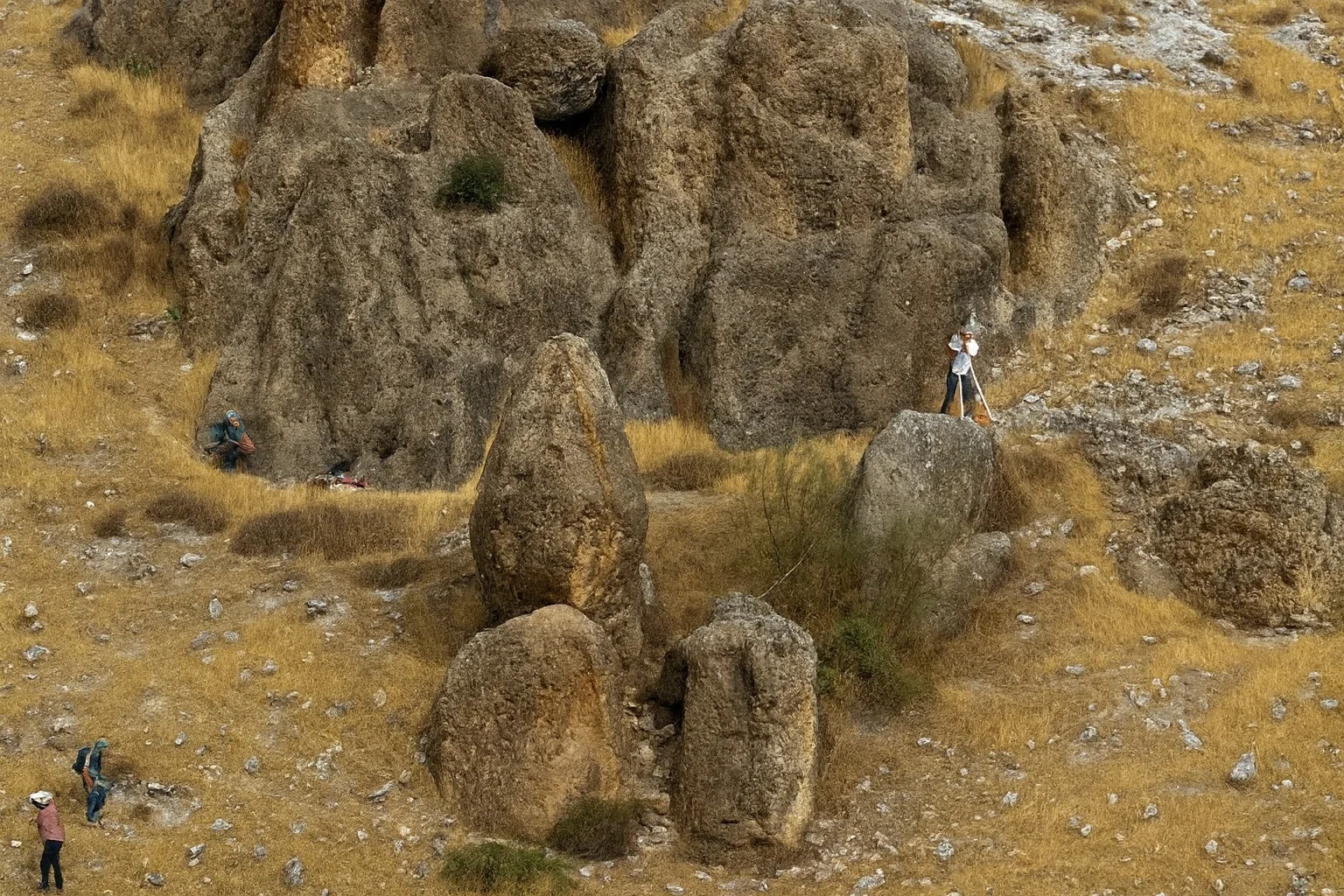Archaeologists from the Research Institute for Iberian Archaeology (IAI) at the University of Jaén (UJA) have discovered a monument connected to the sun and other celestial bodies within Iberian mythology.
Reported in the journal Complutumen, the monument was discovered near the city of Jódar in the province of Jaén, Spain.
It consists of two main structural components: the first being a phallic shaped vertical stone measuring 5.3 metres tall, set in front of two smaller cylindrical stones.
The second component is a rock shelter measuring 6.8 metres in height, whose v-shaped entrance is a representation of the female genital organ, while a large stone placed at the opening of the shelter is suggestive of the fallopian tubes.
At dawn on the winter solstice the sun rises through the conical tip of the phallic stone, projecting its shadow onto the cave. Shortly after, the shadow then aligns with the vulva-shaped feature at the bottom of the entrance before retreating as the sun ascends.
According to experts, the monument is symbolic of a hierogamy, a sacred union between the gods. “It’s a ritual that takes place during the winter solstice and physically recreates the metaphor of hierogamy, a mythical and magical sexual encounter between a solar hero and a fertility goddess, common in the ancient Mediterranean world,” said Arturo Ruiz, a specialist in the study of Iberian culture.
The study authors suggest that the monument dates from between the 5th and 4th centuries BC, shortly before the founding of the first major settlement at Jódar in the 3rd century BC.
Header Image Credit : Research Institute for Iberian Archaeology (IAI)
Sources : EFE







